Musical Instruments
Musical Instruments produce melodic sounds and may accompany vocal music. In the Indian subcontinent, archaeological excavations and ancient texts reveal a highly developed musical culture. The use of the banshi or venu, vina and mrdabga was known to the Indus-Valley Civilisation. Apart from the vina, the Vedas refer to other instruments such as the dundubhi and bhumi-dundubhi.
Some typical musical instruments
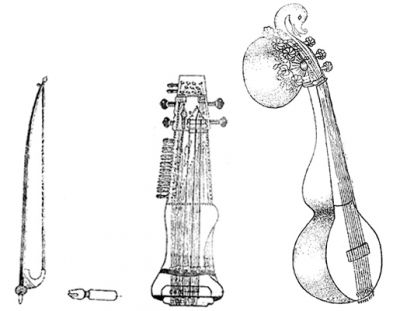
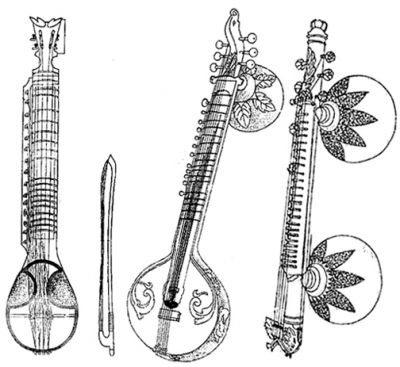
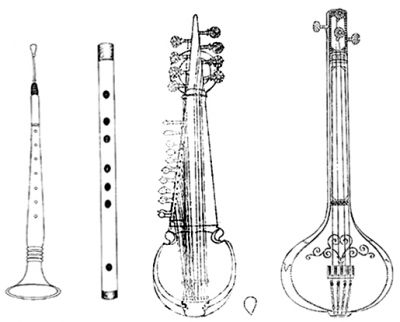

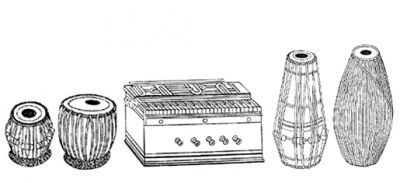
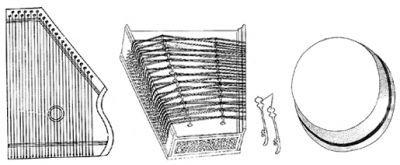
Traditionally, musical instruments in Bengal are categorised into four types, based partly on the material of which they are made and partly in the manner in which they are played. Thus they may be classified as string, wind, metal and hide instruments. Instruments like the sitar, sarod, esraj, surbahar, tanpura, dilruba and vina that produce music through strings are known as string instruments. Instruments like the flute and sanai that are played by blowing are called wind instruments. Metal instruments such as mandira and kartal produce sounds through striking the metal body of the instrument. Percussion instruments such as tabla-banya, dhol, khol, madal, etc are known as hide instruments because of the use of animal skin in making these instruments.
All instruments belong to two categories: svayangsiddha (self-sufficient), that is, instruments like the sitar, sarod, etc that can be played by themselves; and anugatasiddha (dependent), such as the tanpura, mrdanga, etc which are not played by themselves but are played as accompaniments to either vocal or instrumental music. String and wind instruments can be played by themselves and can also accompany vocal music. But metal and hide instruments generally are not played by themselves. They are used to accompany vocal music, their function being to maintain the scale and rhythm. String and hide instruments are closely connected with one another in vocal music.
String instruments are of two kinds: abgulitra (anguli, finger) instruments, which are played with a mizrab, a thimble-like device worn on the finger, or guti or jawa (plectrum), and dhanustata or dhanuyantra (dhanu, bow) instruments which are played with a bow. String instruments are numerous in number. The length of the string used in the bow determines the tone of the sound. The pitch is determined by the tautness or slackness of the string. When the string is taut, the pitch is high and when the string is slackened it is low.
During his visit to Bangladesh in the fifth century, the Chinese traveller, Fa-hsien, saw many musical instruments and called this country the land of music and dance. Excavations at mahasthangar, mainamati and paharpur reveal that music was an integral part of Buddhist culture. A good deal of information about musical instruments is also found in the mangalkavya. All four groups of instruments were known in the medieval period. Percussion instruments included the dundubhi, dindim, mrdanga, jaydhak, virdhak, kada, damru, pataha, dagada, pakhwaj, dampha, suraj, bheri, anak, bheur or bheri, dadamasa, dhak, dhol, mardal, tamak, jagajhampa, damburu, soda or maddu, dama, joda or jodghai, chhapad, and khanjari. Wind instruments included the sanai, shankha, shinga, muhari or madhukarika, upanga, karanal, vishan, turi, bhurunga, and venu. Metal instruments included the kartal, mandira, ghanta, jhanjhar, kanshi, virghanta, kansar, khanja, muchanga; the string group of instruments included the rabab, saptasvara, svaramandal, rudra vina, kapilas, madhusrava, khamak, dotara, pinak, vallaki.
Some musical instruments were invented later such as the sitar, sarod, surbahar, esraj, sarinda, chandrasarang, manohara, ektara, bansi, khatatal, kartal, kathkartal, tabla-banya, kalija khauri, dholak, shrikhol.
String Instruments of the angulitra category include the vina, the tanpura, the sitar, and the sarod. Each of the instruments of this group has its distinctive sound and variety of melodies. The vina is considered to be superior to the other musical instruments because of the richness of its sound. It is eminently suitable for alap (vocalisation). Its sound is sweet, but does not last long and cannot be heard from a distance. Both gut and steel strings are used in the vina. Different kinds of vina were used in different ages: alapini (which used both cotton and silk strings), udumvari, ekatantri, kinnari, kuvjika, kachchhapi, kumika, ghoshavati, chitra or saptatantri, jaya, Jyaistha, tumvuru or tamvura, tritantri, trisvari, daksini, nakul or dvitantri, nakulosthi, nadesvar, naradiya, nihshanka, parivadini, pinaki, pon, prasarini, vallaki, vipanchi or navatantri, brahma, bharat, mattakokila or ekabingshatitantri, mahati, ranjani, ravan-hantak, rudra or rabab, shatatantri, sarod or sharadiya, shruti or dvavingshatitantri, satkarna, saranga or sarangi, sura or surashrngar, svara and hantika.
Many of these instruments are now extinct. Some of them have assumed new names. The mahati vina, for instance, is at present simply known as the vina. Sweet sounds like mid-gamak-murchhana (regulated modulation of sounds through the scale) can only be produced by the vina. The vina is the original and basic instrument. In later stages, string instruments like the sitar, the surbahar, the surashrngar were developed from the vina. Famous vinas of the medieval periods are pinaki, vallaki and rudra vina. The pinaki vina was played like a fiddle. The vallaki vina was specially famous in Bengal. The saptasvara vina was also popular at that time. The rudra vina is no longer played these days, but the svarodiya vina is a modified version of it. Svara vina or sura vina, which resembles the rudra vina has a very sweet sound, but is not very common nowadays. The dhusari or dusari, a kind of vina, was also found in Bangladesh as was another kind of vina called dhusareka which belonged to the same group as dhusari.
Among the vina popular in Bengal, the kapilas was very popular. It was also known as kapilasika, kailas or adya vina. Kachchhapi vina used to be known as the Kachhuya sitar. Saptatantri vina was similar to kachchhapi vina. The tritantri vina was a three-stringed instrument. The surashrngar vina was created out of three ancient instruments: the mahati vina, the kachchhapi vina and the rudra vina. Jafar Khan and Payer Khan, who belonged to the family of the musician Tansen (1532-1589), invented this instrument. Mayuri vina, so-called because its resemblance to a peacock, was also known as taus. Surbahar or surbahar vina was associated with a form of classical music known as dhrupadanga. Ustad Omrao Khan, a musician of Lucknow, invented this instrument for his disciple Gholam Muhammad Khan. Jantra, another kind of vina common in the past, was remodeled during the Mughal period. The invention of the sitar, the name deriving from the Persian words sih and tar, meaning three and string, an improved version of tritantri vina, is attributed to Amir Khasru (1251-1325) and occupies a prominent place among the classical musical instruments.
The sitar is played by plucking strings with a mizrab (an Arabic word, from zarb, to strike) fixed to the right index finger. The three-stringed sitar has been further modified, so that at present there are two types of sitar: the ordinary sitar with seven strings and the tarafdar with eighteen strings. Beginners use the seven-string sitar. In the tarafdar sitar, eleven extra strings, called taraf, are added to provide resonance.
The meghnad is an instrument of the sitar group on which alap is played. Its sound is grave and solemn. The meghnad is somewhat shorter than the surbahar but larger than the sitar. The surachaina is another musical instrument of the sitar group. It is similar to a large sitar, but without the taraf strings. This instrument is also used for alap.
The tanpura, a modern form of the ancient tumburu, is quite unique in the group of string instruments. Though it cannot be played by itself, it is an essential accompaniment for classical, vocal and instrumental music, mainly helping to maintain the scale.
The sarod is a popular musical instrument belonging to the angulitra group of instruments. It is a cross between the rabab, a string instrument popular in the north-western frontier province of Pakistan, and a dotara. The word sarod appears to be derived from the Persian word sehrud.
The dhanustata or dhanujantra group of instruments includes the esraj, the suramandal, the behala, etc. The esraj is a string instrument, also known as ashuranjani. It is an amalgam of the sitar, the sarengi, and the sarinda. Its sound is melodious, and it can be played by itself or used to accompany vocal music. The tar sanai is similar to the esraj, but its sound box is fixed to the main or nayaki string. Its sound is thin and fine. It is an accompanying instrument. The dilruba is another instrument belonging to the esraj group. Unlike the esraj, however, the body of the dilruba is not round, but flat. The manohara, which also belongs to this group, has a sweet sound. Ustad ayet ali khan (1884-1967) is credited with its invention. The mandrabahar also belongs to this group, but is larger than the esraj. Its sound is very deep and low. It is an accompanying instrument for alap. Nadtaranga is a string instrument of the esraj group, and is played with a bow. It is often used in an orchestra.
The suramandal is a many-stringed instrument, with the strings tuned in pairs. It is tuned in three saptakas or octaves and is played by striking the pairs of strings with two bamboo or wooden sticks. The suramandal can be played by itself but it is generally used as an accompanying instrument. The santur belongs to the suramandal group, and resembles the suramandal in appearance and in manner of playing. Like the suramandal, the santur may be played by itself or as an accompanying instrument. The sarangi belongs to the group of accompanying instruments, but is also played on its own nowadays. The sarangi is used as an accompanying instrument in vocal classical music. It is played with a half-moon-like bow. Its sound is sweet and it is widely used in ghazal, kheyal, tappa, kawali and thungri songs. The mandranad is a bass, accompanying instrument. The surarabab is played like the surashrngar. Though the violin or behala (a distortion of Italian vialo) is a European instrument, it is very popular in Bengal as well.
The bow of the svarasanggraha is similar to that of the esraj, but its body is like that of the sarod. The svarasamhraha, invented by fakir aftabuddin khan (1862/69-1933), is also known as vinraj. The meghdambur, also invented by Fakir Aftabuddin Khan, is a simple string instrument, resembling a bow. Its sound is sweet and it is played with a small half-moon like bow.
Hide instruments These are drum-like musical instruments of varying shapes, covered at one or both ends with stretched skin. Unlike the western drum, these instruments are often played upon by hands and fingers rather than sticks. They are essential in the performance of music. Hide instruments may accompany either vocal or instrumental music. The dundubhi is an ancient hide instrument, usually played during auspicious ceremonies and victory celebrations and at temples. The bhumi-dundubhi is another kind of hide-instrument, played to sound the alarm for danger or war. It is also used to announce certain festivals. The dimdim produces a sound resembling dim dim, hence the name. The mrdanga is a very ancient instrument and accompanies kirtan songs and Manipuri Dance in Bangladesh. Its body or khol is made of clay. The srikhol is similar to the mrdanga and is also made of clay. It is largely played during festivals in the rural areas of Bangladesh.
Bow, Tuner, Sarangi, Surshringer, Esraj, Bow, Surbahar, Vina, Shahanai, Flute, Sarod, Striker, Tanpura, Sitar, Rabab, Violin, Bow, Tabla-bayan, Harmonium, Pakhwaj, Khol, Surmandal, Santoor, Strikers, Khanjani
The pakhawaj (perhaps a distortion of the Persian words meaning holy sound), made of wood, was developed from the mridanga. Its notes are both sweet and grave. The pakhawaj is used with the vina and the surabahar and accompanies dhrupad-dhamar songs. The tabla and banya are a pair of percussion instruments, traditionally believed to have been invented by Amir Khasru by slicing the pakhawaj into two parts. The tabla and banya are always played together, with the tabla on the right and the banya on the left. They are mainly accompanying instruments, but are nowadays also played solo.
The dhak is an ancient instrument. It is very large, with both ends covered with skin. It is played by striking each end with bamboo sticks. It is usually played at auspicious ceremonies like Hindu pujas and festivals. In ancient days it was called danka. A large dhak is known as jaydhak. The virdhak or virkali is similar to the jaydhak in appearance and manner of playing. The pataha, sometimes termed pada, was a popular instrument of the medieval period. The dhol is smaller than the dhak, but similar to it with both ends covered with skin.
It is played with a stick in the right hand, and the palm of the left hand. The Bangla dhol is larger than the ordinary dhol. The dholak is smaller than the dhol and looks like a small barrel. The dholak may be played in an orchestra. It is also commonly used to accompany ghazal and kawali songs.
The damru or dugdugi is a hide instrument used by Doms. In ancient texts it was mentioned as the instrument of shiva. But nowadays it is mainly used by strolling monkey-men to draw crowds. The kada is hung from the player's neck and played upon with a pair of sticks. It was used in war and auspicious ceremonies. The jagajhampa, made of clay, is bigger than the kada, but played in the same manner. The naqara, also made of clay, is half-circular in shape. In the past it was sounded on the battlefield, but at present it is used in auspicious ceremonies. The tiqara is a hide instrument made of copper, brass, wood or clay. It is smaller than the kada. It is played as an accompanying instrument with sanai and naqara. The damama used to be played on battlefields along with the tiqara in the past, but at present it is used at auspicious ceremonies. The daff or damffa is made of wood. It looks like a sieve, with one side of the circlet covered with skin. Small pieces of metal discs are attached to the body of the instrument. The nal is made of wood; both its ends are covered with hide.
Metal instruments such kind of instruments have been used since ancient times. The kansa or kansar is a small round plate, made of kansa (bell-metal). The tal, or cymbal, is also a round brass plate and is played by striking one plate against another. The ghanta or bell made of brass is often used at different Hindu festivals and at auspicious ceremonies. The mandira consists of a pair of small brass bowls. Music is made by striking one bowl against another. It helps to keep the time or measure, tempo and rhythm. The jhanjh or jhanjhar is made of brass. There are two types of jhanjh: medium and large. A medium jhanjh is played by striking one jhanh against another, while a large jhanjh is played by being struck rhythmically with a stick. The kartal, a small version of the jhanjh, is made of brass or bell-metal. It accompanies kirtan and bhajan songs.
Wind instruments occupied an important place in music. There are different types of wind instruments, each with its own characteristics. The shankha (conch) is an old wind instrument made from large conch shells and is played by blowing. It is used in Hindu ceremonies. Singa or Shrnga (literally horn) is a horn-shaped wind instrument. In the past it was made from buffalo horn, but nowadays it is made of brass or other metals. The ranashinga (literally battle-horn) looks like a very large English S. Its name is associated with its use during battle in ancient times. The bheri is a wind instrument made of brass and, like the ramshinga, was blown on the battle-field.
The bansi or flute is very ancient wind instrument made of bamboo. There are different types of flutes, such as the saral bansi, ad bansi or murali, tipra bansi or venu and laya bansi. Sanai belongs to the flute group. In shape it closely resembles the Dhutura (thorn-apple) flower. Generally the sanai is not played alone. While one sanai plays, another keeps the note sadaj (sa) without any break. A small tiqara is used as an accompanying instrument. When these three instruments are played by three different performers together it is called the raushanchauki, or nahbat (kettle-drum). In the past, a nahabatkhana (place for the kettle-drum) used to be constructed on the top of the main arch of the royal palace, where the nahabat was played at three hourly intervals. The nyastaranga is a metal wind instrument.
Jaltaranga (water music) does not fit into the above categories. It is composed of several porcelain bowls of different sizes ranged in order from large to small. Water is poured into the bowls. The notes are determined by the size of the bowl and by the quantity of water in each bowl. Music is played by striking the bowls with a pair of sticks. The jaltaranga can be played by itself, but it can also be used as an accompanying instrument.
Folk Musical Instruments accompany folk and devotional songs like baul, bhatiyali, bhawaiya, marfati, murshidi gan etc. Prominent among them are the ektara, dotara, sarinda, anandalahari, and tubri. The one-stringed ektara (one-string) is made of the dried shell of gourds, wood-apples, or coconuts and has only one string. It is generally used by bauls, vairagis and fakirs as an accompanying instrument. The dotara (literally two-strings) is made of coconut-shell and has four strings. Though it is an accompanying instrument, it can also be played by itself. Anandalahari (Khamak), Lau (Nandin), Gopichand and Thunthune are similar instruments. The kalija khauri is made by hollowing out a dried gourd. It is played by plucking the string with a finger. The sarinda is another old string instrument made of wood. It is an accompanying instrument, but can be played solo. Its sound is very sweet. The tubri is a flutelike wind instrument with two pipes. One pipe plays different notes while the other plays one continuous note. The tubri is the snake charmer's instrument. [Mobarak Hossain Khan]
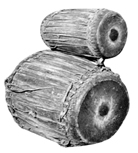
Tribal Musical Instruments the chakma, tripura, Tanchangya, mru, Bam, Usui, pankho, khumee, and Lusain of greater sylhet and chittagong hill tracts have their own traditional instruments which they play during their festivals and occasions. Some of these instruments can be played only on certain occasions. Three musical instruments are quite popular: the dhol or tom-tom, the flute, and the violin. The santals of northern Bangladesh use musical instruments such as tanda, tamak, danda, dhak, dhol, madal, etc to accompany their dances. They also have a number of flute-like musical instruments: plung, tu, baji, simur, shinga, and claonet. The Mro and Khumi traditionally use the plum, which in the Mro language means flute, on both social and religious occasions. Depending on the number of bamboo reeds, there are four types of plum: if there are three reeds in the lower part and two in the upper, the instrument is called tinteng plung or tulerum plung; if there are two reeds in the lower part and two in the upper, it is called plungke; if there are two reeds in the lower and one in the upper, it is called plungma; and if there are five reeds in the lower and four in the upper, it is called rinaplung. The Mro and Khumi make the plum with local material such as the shell of a bitter bottle gourd available in the hills and of thin bamboo. Among the Mro and Khumi, the plum is played at religious ceremonies by people praying for some boon, while the rinaplum is played at ceremonies organised to pray for relief from some natural calamity or epidemic. The Chakma call the flute baji, which they prepare from bamboos of different sizes available in the hills. These flutes are often ornamented. The traditional flutes of the Tripura are called shimur. Simur flutes are slightly longer than ordinary flutes and have a greater number of holes. The Tripura play this flute during Paraiya dance and on other religious occasions. The Chakma and Tanchangya make a sort of trumpet with a four- or five-foot long bamboo.
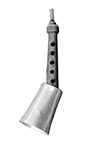
Musical instruments similar to the dhol include khaing, kha-am, bunga, peh, ganga / darkhoyang, etc. The Usui use khaim which are two to two and a half feet long and one foot wide. The frame is made of light gamari wood over which the skin of a tiger or goat is stretched. The Tripura use the kha-am, which they play during the Garaiya religious festivals and functions. The bunga of the Marma is a small dhol that is played along with other instruments.
The darkhoyam, another dhol-like musical instrument, is played at the cow-slaughter festival of the Mro and Khumi, at the hunting and war dances of the Pankhos and at the religious festivals of the Chakma, Marma and Chakder Kyang.
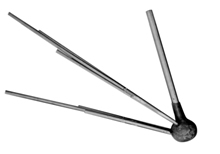
The kheng kharang, be-ana, dhudhuk, kri-chay, fakir dabgais, senda, chang prei and ektara are violin-like musical instruments. The Marmas call the khem kharam khre khreng and the Tripura call it sangmun. The Chakma, Tanchangya, Marma and Tripura make this instrument from bamboo and play it on different social occasions. A violin-like instrument made of bamboo and wood is popular among the hill tribes. It is called be-ana by the Tripura, bela by the Chakma, beyanj by the Marma, and tra by the Mro. The dhudhuk is another violin-like instrument popular among the Chakma, Chanchangya and Tripura. The Chakma and Chanchangya also call this instrument tutrumao, while the Tripura call it tutu-a. The kri-chay is a violin-like instrument of the Marma. It is made of wood and brass and has fifteen to twenty strings, which are played with two chips of wood. The dungmang is another similar instrument. The fakir dangais is a type of ektara used by the Tripura and Usui. It is made like an ektara, with a chord running length-wise down the middle. Music is created by touching the chord either manually or with a piece of wood. The senda is an unusual guitar prepared by the Usui. It looks like a dove's nest and is prepared by hollowing out a piece of wood of about 2/3 feet in length and one and a half feet in breadth. Animal skin is stretched over the hollow frame and three chords are then fastened to it. The chang prei is another traditional instrument of the Usui. A piece of wood three feet long is hollowed out and three chords are attached to it as in a guitar. The first chord is mainly used for creating music. Five small wooden chips are fixed with wax at the bottom of the first chord. The Mro and Khumi ektara is made of shells of dried bottle gourds and coconuts.
The people of different tribes have been using these musical instruments from time immemorial. These instruments are all closely linked with their feelings and emotions, their life-style, their economy and, above all, their philosophy and aspirations of earthly and spiritual life. [Mobarak Hossain Khan, Wakil Ahmed, Momen Chowdhury]
Bibliography NR Roy, Bangalir Itihas (Adi Parva), Calcutta, 1945; Rajeshwar Mitra, Banglar Sangit (Madhy Yug), Calcutta, 1955; Jitendramohan Sengupta, Bharatiya Badyayantra O Yantrasadhak, Calcutta, 1958; MH Khan, Badyayantra Prasnga, Dhaka, 1992; JA Hanafi, Upajatiya Nandan Sangskrti, Bangladesh Shilpakala Academy, Dhaka, 1993; James Hastings ed, Encyclopeadia of Religion and Ethics, Vol. IX, London, 1953.
